Estimated reading time: 12 minutes
The recent pandemic taught us a lot of things, and one of them is to be prepared for global disasters. Now, the world is facing a food crisis, supply chain problems, and even the possibility of nuclear war.
If a sudden disaster like an EMP or cyberattack, parts of the power grid (or maybe even all of it) could go down. If that happened, one of the first things you'll want to do is get in touch with your loved ones. But without the power grid, how would you? Even if your phone still works, cell phone towers could be down or completely jammed.
Communication will be vital after the grid goes down so we can find out what is happening in our community. You won’t be able to turn on the TV for the news, check your phone, or go online to see what is happening.
Just watch any kind of futuristic survival movie, and you’ll see how important it is to be able to communicate with others when the power is gone. In fact, many Americans believe that an attack on the power grid would be more detrimental than any kind of physical attack that could cause bodily harm.
While it may sound dire, humans have been communicating with each other for many years without the need for a centralized power system. They may seem old and outdated, but many of the ways that we communicated centuries ago will come back to the forefront in an emergency.
Check out all of these ways to communicate after the grid goes down, and invest in these options to add to your emergency supplies this year.
Want to save this post for later? Click Here to Pin It On Pinterest!
Higher Tech Options
These ways to communicate include some kind of prior knowledge, licensing, or money to purchase and use in an emergency.
CB Radios
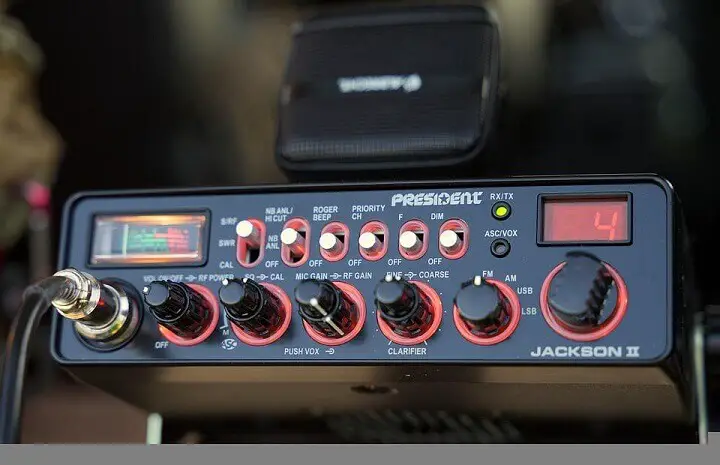
The Citizens Band Radio Service, known as CB radios, is a great option for communicating locally in your area. You don’t need a special license to own and operate a CB radio, but there are some rules and courtesies that you should be aware of.
A CB radio has 40 shared channels that are lower powered than other radio options. You can only communicate within 155.3 miles away from your location, but some signals do skip longer distances due to the ionosphere. The 40 channels use AM mode or Single SideBand (SSB) mode. SSB has two modes: upper and lower that offer less noise than AM modes.
When selecting a CB radio for your home, it is crucial to invest in a high-quality antenna that can make all the difference. Cobra is a popular CB radio brand, as well as Galaxy, Uniden, and Midland. You can purchase a mobile professional-grade CB radio for your vehicle for about $120 or get a handheld option for about $100.
Mobile CB radios are powered using the battery in the vehicle, or you can purchase some adapters that allow you to tap into the car’s power system. Home-based CB radios can be powered using a base unit battery or a 12-volt power supply. You could also check out solar-powered chargers for continuous power when the grid is down.
Garmin inReach Mini
A new option for survival includes the Garmin inReach Mini, which is a compact satellite communicator. This little device has 2-way communication options and tracking and SOS capabilities in case of an accident. You can send texts with the inReach, which could be helpful when the power grid is down in your area but not globally.
The Garmin inReach Mini is more expensive at $350 to purchase the device. A monthly subscription is also required, and there is a limit on how many text messages you can send. The lithium-ion battery can last up to 14 days in default mode.
Tracking your location and sharing with others every 10 minutes cuts battery life to 5 days. You can also choose the tracking interval of every 30 minutes, extending the battery to 30 days of use.
While the battery is rechargeable with a USB-C cord, you could use a solar power charging unit or use an adapter to a hand-cranked power supply as well.
Ham Radios
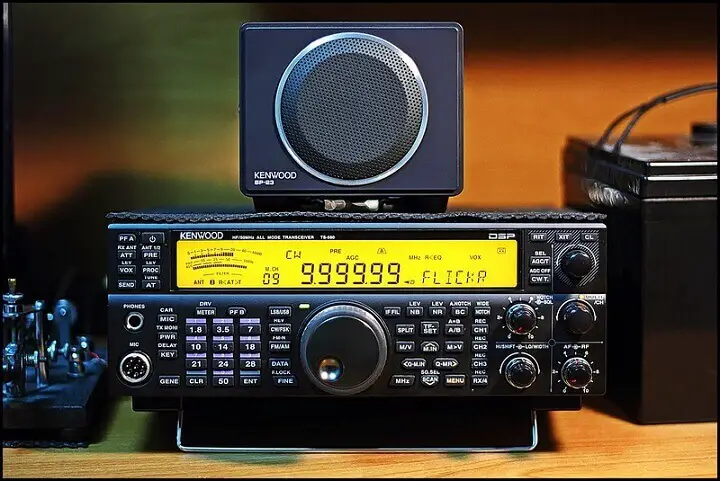
Amateur Radio, affectionately known as Ham Radio, is a great way to communicate with others once the power grid fails. Ham radio is a popular hobby that many enthusiasts, both young and old, like to practice.
Ham radios allow operators to talk with people worldwide without needing cell phones or the internet. You can even talk to astronauts at the International Space Station using a ham radio.
Due to their distance abilities, ham radio operators do need a license to operate a station officially. The FCC regulates the radio frequencies used by ham radio operators known as Amateur Bands. Ham radios have proven their importance in assisting others and emergency services after disasters have shut down the usual communication methods.
The license costs about $40, and you must take a test to show your understanding. After receiving a license, it usually costs about $200 to get your first ham radio. There are six types of licensing classes, allowing you to grow your skills and abilities with the ham radio. You can power the ham radio with a 12-volt DC, power bank, and even through solar power with the right equipment.
Many preppers and homesteaders prefer to use a ham radio as a source of communication because it is more powerful and can reach people worldwide.
Satellite Phones
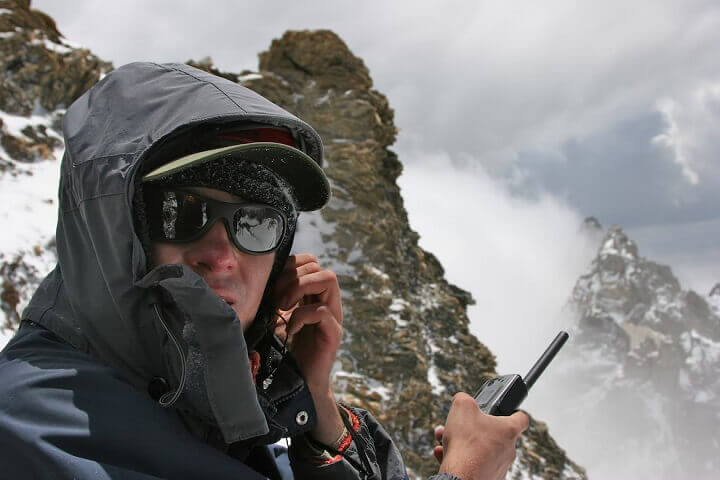
While most of us have a cell phone within reach, a cell phone will do no good when the power grid goes down. Cell phones work off of cell towers that rely on electricity to receive and relay signals between phones.
Satellite phones, also known as sat phones, bounce signals off orbiting satellites instead of cell towers on land. The communication satellites are constantly spinning around the Earth in either High Earth Orbit or Low Earth Orbit (LEO). The High Earth Orbit satellites are large and spin about 22,000 miles above the ground. LEO satellites are smaller and are about 900 miles off of the ground.
There are more LEO satellites, with usually a few within a line of sight of any location on the globe. This makes sat phones a great option to use when in a mountainous area with little skyline or in a region that doesn’t have cell phone tower access whatsoever.
Satellite phones are expensive, at about $600-$2,000 each, and you will pay a per-minute fee and monthly service fee on top of that. However, having one in your possession could be the difference between life and death in a survival situation. Let’s just say that if you had to use it, your last worry would be about the fees.
Sat phones are charged with a battery, and you can purchase a solar charger for them to make it easy to keep the phone ready for use.
Medium Tech Options
There are a few communication tools that require some power, but are pretty easy to use and master.
Emergency Radio
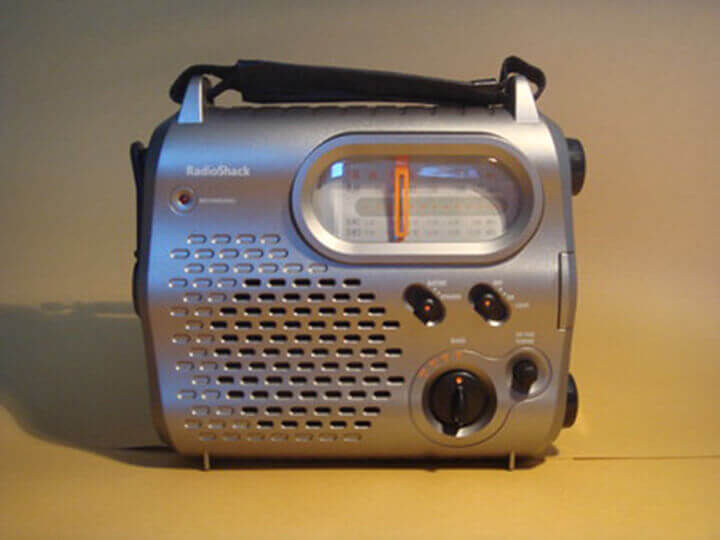
Another option for ways to communicate after the grid goes down is to purchase a handheld emergency radio with a hand crank. This useful tool is small enough to easily pack but can connect you to local radio channels in your area for information. While you can’t send any kind of communication with this radio, it is an important tool to stay in touch with others in an emergency.
The hand crank allows you to use your own physical power to charge the radio, and many styles come with charging cords so that you can power other devices using the hand crank. Small hand crank emergency radios cost about $20, while larger ones cost about $80.
Morse Code
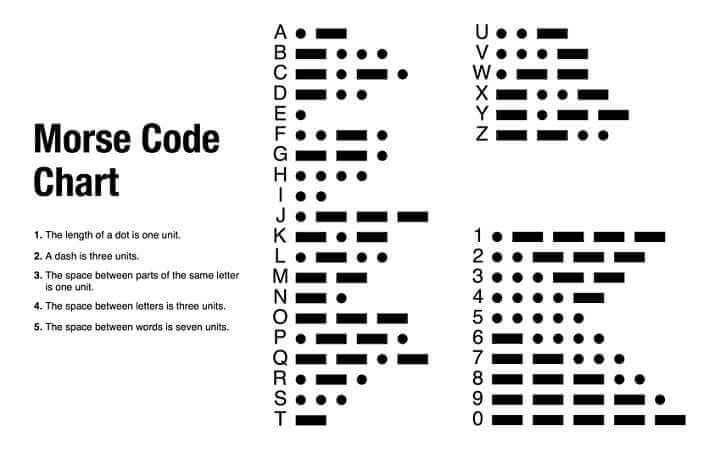
It may seem outdated, but knowing and understanding morse code could save your life in an emergency. Morse code is a system of dots and dashes that equal a letter of the alphabet. These dots and dashes are used together to spell words without verbal communication.
Morse code is usually transmitted via electrical signals, but you can use it in non-audible forms of communication as well. Using morse code with a light, or even with window blinds, are ways that you can communicate using no sound at all. Really, you could use morse code using anything that can quickly be turned on/off or open/closed.
Memorizing the code and then practicing with others is a great way to build your skills and keep this form of emergency communication handy.
Walkie Talkies
While walkie talkies are often looked at as old and outdated, they are an option for communicating without a power grid. A good model can communicate with others about 30 miles away, making it an essential part of getting local information.
Walkie talkies don’t require any kind of service or signal, and you can quickly talk to others with just a push of a button. They are easy to use and pretty reliable as long as your battery is charged and there is someone at the other end who is listening. You’ll get better reception from a walkie talkie if you know the surrounding topography and can transmit from a higher location.
You can get a pack of two walkie talkies or expand to a larger set that would be great for families that don’t live in the same home but are near enough within the 30-mile range. Walkie talkies are powered by batteries that can be charged through a base charger. However, when the power grid goes down, you’ll want a solar power charging option to keep the units ready to go.
Low Tech Options
When the use of technology is out of the question, or you can’t get anything charged, using these low tech options may just be your best bet.
Fire & Smoke
While fires are a low form of communication in an emergency, it is a basic way to show others where you are. Think of the recent movie, A Quiet Place, that used fires at night to show nearby neighbors that everything was okay.
You’ll probably be using fire in an emergency to keep warm, so you can also use it to show others farther away where you are. On the other hand, if you want to keep your location secret from others, it would be essential to limit your use of fire and smoke.
Signal Mirror
Another extremely low-tech option to communicate with others would include a signal mirror. Really, anything that could bounce sunlight, like metal, steel, or shiny objects, could also suffice in an emergency.
A signal mirror is small and could be extremely helpful in alerting others about your location when you can’t use sound or the power grid. You do need sunlight to work a signal mirror properly, but could still reach others even if the sun isn’t too bright. Signal mirrors also pull double duty in that they could also help start a fire by bouncing the sun’s rays to a specific point.
Whistle
Another low-tech way to communicate is the good old whistle. Many hikers and outdoor enthusiasts have a whistle on their bag as an emergency communication tool. You can use the whistle along with morse code to relay a message or just blow on the whistle to alert others of your location.
Whistles can usually be heard up to a half mile away, and animals that are with you could hear them from farther away than that.
Written Word
Just because you are in an emergency doesn’t mean that you should overlook the written word, either. Leaving notes for people to read can be a huge asset. Even if you don’t have paper and pen, look for other ways to write including carving into a tree with a knife, using rocks to scrape onto surfaces, or burning letters into a surface.
A failing power system is a scary concept to many. However, if you prepare for this worst-case scenario, it is possible to still communicate quite well in an emergency. The best options for ways to communicate after the grid goes down include ham radio, CB radio, or sat phones. Investing in a Garmin inReach Mini is a great option for those who want to be able to text others and have location-tracking capabilities.
A hand-cranked radio doesn’t allow users to send messages, but it could be the power source that helps charge other communication tools. These radios also help give you local information and news.
Walkie talkies are another medium tech option that relies heavily on the topography of your area as well as the distance between devices. Lower tech options like a whistle, signal mirrors, and fire and smoke may seem silly but could be a lifesaver in an emergency.
No matter how you choose to communicate with others, once the power grid goes down, it is important to have a few options on hand. While the more expensive radios and phones would work great, sometimes the best communication tools are those lower-tech versions that have been around for centuries.
Consider all of these ways to communicate after the grid goes down and add a few of them to your bug-out bag or emergency supply this year.
Like this post? Don't Forget to Pin It On Pinterest!




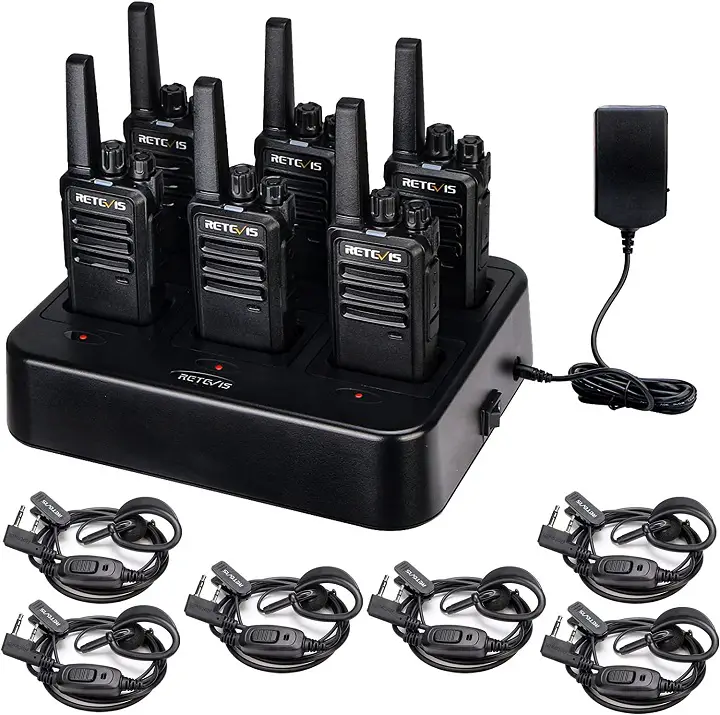

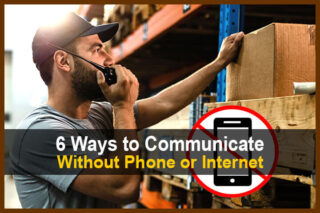
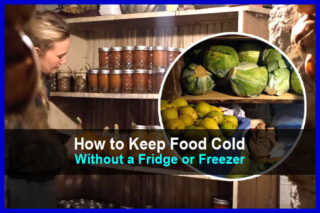

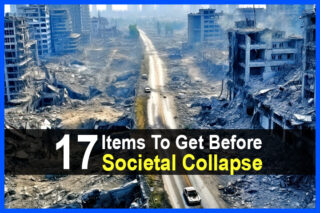




Once the grid goes down the electronic options will get really limited really fast.
Most Hand held portable radio sand 2 meter ham rigs will be for line of sight communication. Most rely on repeater systems to get good reception or distance communication. This includes some commercial radio frequencies and cell phones. Those repeaters are usually grid powered.
Sat phones might be great but only if you are calling another sat phone. I am also not sure that once the grid goes down; that the grid based computer servers that verify your paid service subscription, will be working, so what will that do to your service? No verification probably means no service.
Now if you have a gigantic antenna system you can use other frequencies to get longer or world wide distances, but how many other stations will be operating? Not many will have enough off grid power to do so or will not have bugged out.
Then there is the longer term problems of generating off grid power and of battery life both in the radios and in the off grid power supply system.
So you better brush up on other forms of communication. flags were common, heliography, smoke signals. etc.
Sat phones will not work when the grid goes down. Even two sat phones will not talk to each other because satellites are not repeaters. The sat phone signal goes through a satellite to a central office on the ground for dial tone, ring tone and routing. Without power to the central offices, nothing works.
There are no longer six licensing categories for HAM radio. Only three now, Technician, General, and Amateur Extra. Morse code knowledge is no longer a requirement either (although handy to know and lots of older HAMs know it).
As mentioned before, Amateur Radio in the U.S. has 3 license classes, Technician, General and Extra. There is a test required to get licensed at each level. Morse code is no longer a requirement. The FCC fee is $35 and usually there is a small fee for the testing as well.
Another option to consider is the fairly new (2017?) GMRS – General Mobile Radio Service. It uses the UHF bands at 462 and 467 Mhz. It is shared, in part, with the FRS (the radios you buy in the sporting goods dept.). GMRS is licensed, but there is no test. The license costs $35 and one license covers the holder and their immediate family (spouse, kids, parents, etc…)
GMRS is channelized, like CB, so you don’t have to remember frequencies. They are also pre-set to use the correct power levels, depending which channel you are on. GMRS allows the use of repeaters and improved antennas. GMRS handhelds are up to 5 watts of power (like the popular Baofeng UV-5G), and mobiles / base (search BTECH) are up to 50 Watts.
These are a great option for groups with people within a 20 mile or so radius. They rely on line of sight for the best performance, but the UHF frequencies also have good building penetration. As with any radios, a source of power is necessary, but they run on 6-12v and there are many options to power them in a grid down situation.
Don’t bet the house on ANY frequency being up and running. Most frequencies can be disabled or scrambled by an enemy force. Have plan B ready with this in mind. Pre-planned executive actions. And if you can use the frequencies, always speak in a code that only you and others understand.
3 ways to spread gossip during a chrisis:
1. Telephone
2. Telegraph
3. Tell a woman
Best way to prevent it:
Zip your lip!
There are a number of wrong things with this article. Several have been addressed by previous comments. Another is your photo under ‘walkie talkies’ is a ‘ham radio’ requiring a license. The amazon link in that section is for a ‘GMRS radio’ which also requires a license (but no test). You should link it to a ‘FRS radio’ which I call a playground radio (basically a way to keep in contact with your kids at the park).
Also add a MURS radio.
Seriously if it is a total grid down, your Ham radios, GMRS, FRS & MURS are basically line of sight only. If some HAM repeaters are running on batteries (which you wont likely know), then you commo might stretch out.
this article needs to be pulled or redone.
And these articles need a date when they are published as things change.
thanks.
You’re mostly right, but not with the Ham radio – HF rigs do not need repeaters. Twice a year, ham radio operators run an event called Field Day. They get on the air and make contacts – all with no grid power. I have a portable 50W multi-band transceiver that I operate from the SE USA – and I make direct contacts out to Vancouver BC, the Netherlands, France, Belgium, Brazil and everything in between – and that’s with a portable radio, antenna and off-grid power. In ham circles, repeaters are mostly used with VHF/UHV comms. Also, hams often build their systems for emergency comms, so many repeaters do have off-grid backup power.